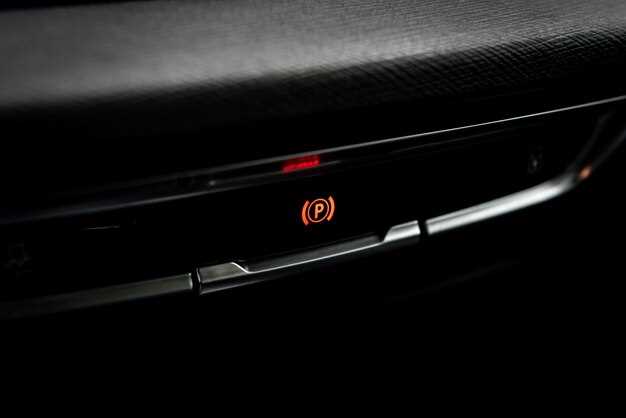
The dashboard of your Audi vehicle plays a crucial role in providing important information about the car’s performance and maintenance needs. One of the key indicators on this display is the service light, which alerts drivers when it’s time for routine maintenance or inspections. Understanding how to manage this light is essential for maintaining optimal performance and ensuring the longevity of your vehicle.
Resetting the service light is a straightforward process, but it varies depending on the specific model of Audi. Neglecting to reset this light after service can lead to confusion and unnecessary delays during future maintenance checks. This guide will equip Audi owners with the necessary steps to properly reset the service light, ensuring that the dashboard accurately reflects the current maintenance status of their vehicle.
Whether you’re a seasoned Audi owner or new to the brand, knowing how to reset the service light not only enhances your ownership experience but also contributes to the overall health of your vehicle. By following the steps outlined in this guide, you can take control of your car’s maintenance needs and enjoy the performance that Audi is renowned for.
Step-by-Step Process for Resetting the Service Light
Resetting the service light in your Audi vehicle is a straightforward process that can be accomplished with the right steps. Follow these instructions carefully to clear the service indicator from your dashboard.
Step 1: Ensure that the ignition is turned off. This is crucial to prevent any electrical issues during the reset process.
Step 2: Press and hold the trip/reset button on your dashboard. This button is usually located near the speedometer or in the instrument cluster.
Step 3: With the trip/reset button held down, turn the ignition key to the ON position without starting the engine. Make sure the dashboard lights come on, but the engine remains off.
Step 4: Continue to hold the trip/reset button for approximately 10 seconds. You should notice the service light on the dashboard start to blink and then eventually turn off.
Step 5: Release the trip/reset button after the service light has turned off. This confirms that the reset process was successful.
Step 6: Turn off the ignition and then restart the vehicle to verify that the service light has been reset completely. Check the dashboard to ensure that the indicator does not reappear.
By following these steps, you can efficiently reset the service light on your Audi vehicle, allowing for a clear dashboard and peace of mind until the next servicing is due.
Troubleshooting Common Issues After Resetting

After resetting the service light on your Audi vehicle, you may encounter some common issues that can affect your dashboard readings and overall performance. Understanding these problems can help you resolve them quickly.
One frequent issue is the service light reappearing shortly after reset. This can indicate that the reset procedure was not performed correctly or that the vehicle’s onboard diagnostic system has detected an existing issue that requires attention. Ensure that you followed the reset steps precisely and check for any trouble codes using a diagnostic scanner.
Another problem may involve inconsistencies in the dashboard readings. If warning lights remain illuminated or other indicators behave unexpectedly, it might suggest a malfunction in the vehicle’s electrical system. In such cases, performing a battery reset or checking the fuses may resolve the issue. If problems persist, further investigation into the vehicle’s electronic control unit (ECU) could be necessary.
Additionally, if the service indicator does not turn off after resetting, it might be due to the need for a software update. Manufacturers often release updates that enhance the vehicle’s performance and rectify bugs. Verify if your vehicle has the latest software to ensure smooth operation.
Finally, ensure that all scheduled maintenance has been completed. Resetting the service light does not negate the need for actual servicing. Neglecting routine maintenance can lead to larger mechanical issues down the line, which could affect the vehicle’s performance and cause warning lights to activate on the dashboard.
Understanding Service Light Indicators on Audi Dashboards

The service light indicators on Audi dashboards play a crucial role in maintaining the performance and longevity of the vehicle. These lights are designed to notify drivers when the car requires service or maintenance, helping to prevent potential issues before they escalate.
Typically, Audi vehicles come equipped with various service light indicators, each representing a different aspect of vehicle health. The most common lights include the general service light, oil pressure warning, and brake system alert. Each of these indicators serves a specific purpose, ensuring that drivers are informed about the necessary actions to take.
The general service light typically illuminates based on a set interval, signifying that routine maintenance is due. This could encompass tasks such as oil changes, fluid checks, and inspections. Ignoring this light can lead to decreased performance and may affect the car’s reliability.
Oil pressure warning lights indicate a potential problem with the vehicle’s lubrication system. If this light comes on, it is essential to check the oil levels immediately. Operating the vehicle with low oil pressure can cause severe engine damage, necessitating costly repairs.
Brake system alerts inform drivers about issues related to the braking system, which might include low brake fluid levels or problems with the brake pads. This indicator is critical for safety, as it ensures the car can stop effectively when needed.
Understanding these service light indicators is vital for Audi owners to ensure their vehicles remain in optimal condition. Regular checks and timely interventions based on these alerts can save both time and money in the long run.
